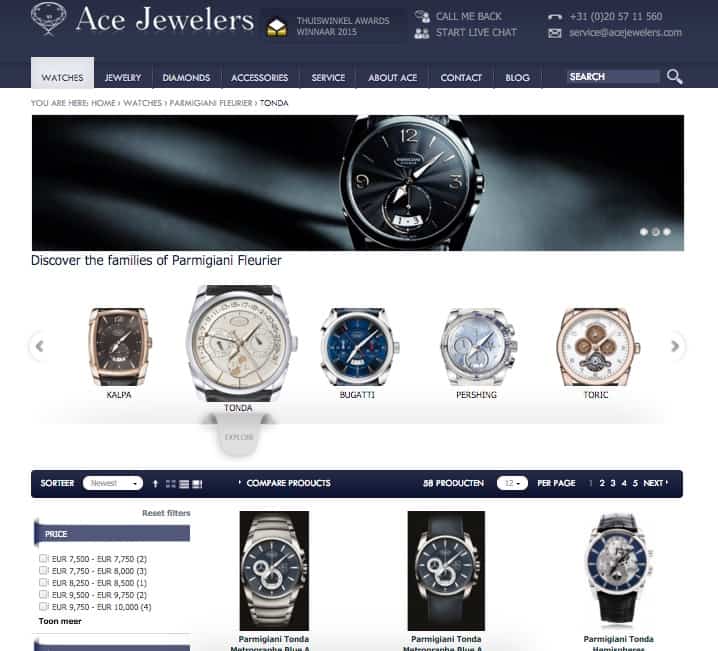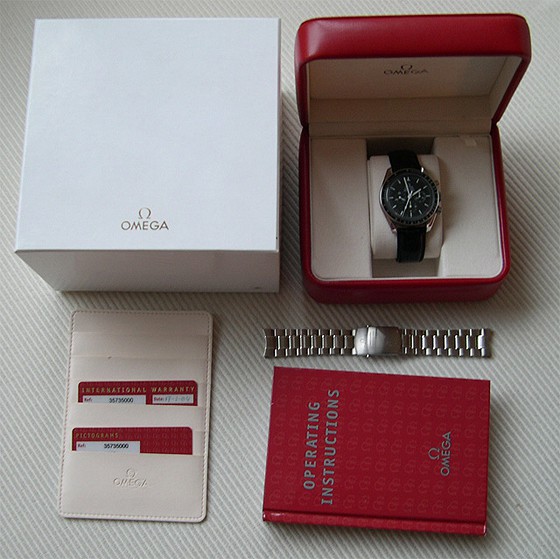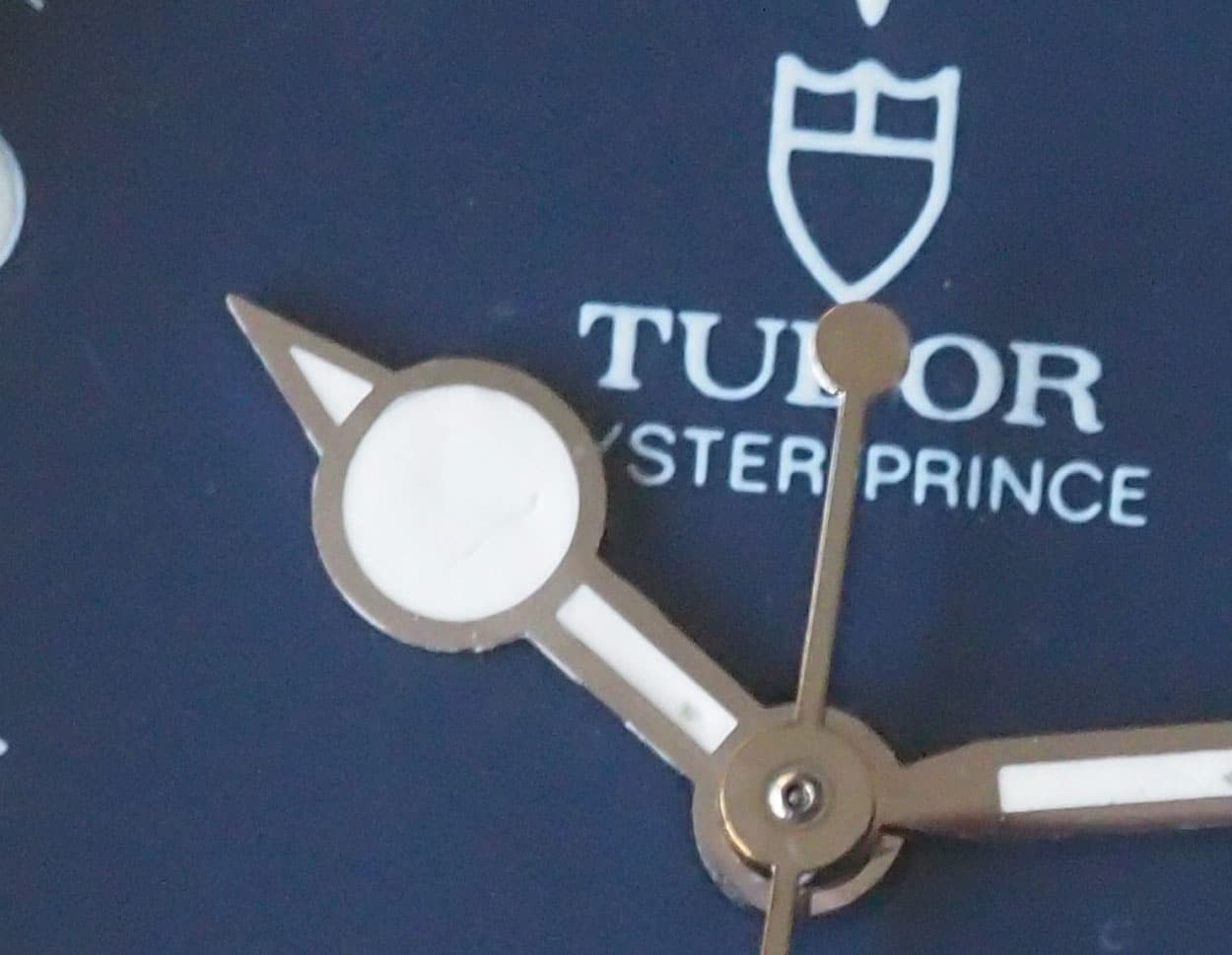Collecting Watches – My Personal 7 Rules
I always tell myself I am not collecting watches, even though my wife thinks otherwise, but as a Speedmaster aficionado I have to admit that I do own a collection of those. Normally, I just buy what I like and what I am actually going to wear. So my ‘collection’ consists of a couple of evergreens from Rolex, a Royal Oak (or should I say the Royal Oak) and of course a couple of Speedmaster watches and so on. So perhaps I am collecting watches, but only Speedmasters. The other purchases are just that, purchases of a watch that I like to wear on a regular basis.
Every Thursday we publish an article on a vintage watch with some buying tips and we did some specific buyer’s guides, but I thought it might be nice to share my personal 7 rules for collecting watches.
Collecting Watches – My Own Guidelines
1. Buy the Seller
Let’s kick this door open right away! An often heard phrase and advice when it comes to collecting watches is, “buy the seller”, cliché but so true. If you don’t trust a seller, skip the entire idea of buying something of them, no matter how good the price is. Trust your gut-feeling. Try to do some research on the seller before you make a decision, ask around in forums or in the available Facebook groups for example. On eBay you can check the feedback status of a seller, make use of that feature. On websites like Chrono24 you can see whether a seller has a (Premium) Trusted Seller status although that doesn’t say much about the quality of his sold items.
On forums like OmegaForums.net, WatchUseek.com, vintagerolexforum.com and the likes you will be able to search for certain sellers and check their reliability. However, some forums have some restrictions on discussing dealers and sellers, please read their policy on this before you start asking questions.
Basically, it is the first thing that I do when I see a watch that I am interested in, do some research about the seller. Once you trust a seller and bought something from them, it might be a good partner for the rest of your career in collecting watches.
In any case, always ask a seller what kind of guarantees you will have before wiring the money.
2. Educate Yourself
I’ve been an avid user of watch forums since the mid-1990s and although my time doesn’t allow me to check them all every day anymore, I do use them to learn more about a certain watch. The pitfalls of specific watches and basically other people’s experiences. I always try to rate these type of forum posts and shared experiences by looking at the other forum posts this person has written for example. Is he or she knowledgable and basically know what they are talking about? There is a lot of non-sense being written out there, so try to give these reviews or experiences the right amount of value.
Of course, you can also read magazines (on-line and in print), blogs and books on the subject. Personally, when I am after a Speedmaster to add to my collection, I use books like Moonwatch Only, Journey Through Time, go to OmegaForums.net to do some research, ask the nice people from the Omega Museum when I am having questions that no-one else seems to be able to answer. The advantage of collecting watches from big and still existing brands is that there is often enough information out there, be it on-line, in books or directly from the brand. In case you are collecting watches from a discontinued brand or an old brandname that has been bought by new investors, it becomes a bit more difficult to touch base with the brand and you are delivered to the subject matter experts of these watches.
Even when you are already an expert on the topic, don’t think you know everything there is to know. I learn new stuff on Speedmasters all the time, whether it is newly discovered history or certain details on vintage or limited models or even new models.
3. New or Pre-Owned
Since I am not one of the fashion bloggers who gets paid a 7 figure amount a year, I need to control and monitor my budget for collecting watches. Especially today, with today’s economy (weak Euro, disconnected CHF) and the price increases that brands like to carry through every year, the pre-owned market can be very interesting if you are searching for a watch. A new watch from an authorized dealer or boutique give you a level of comfort and security of course, but if you are able to snatch a nice young pre-owned watch in mint condition for 60% of the price it will make you feel good at the end of the day I guess.
When you are buying a new watch it doesn’t mean you have to pay full retail of course. Some retailers are willing to give you some discount or give you some extras like straps or a winder. They have to fight grey import as well and be capable of competing with some on-line guys who are able to sell new watches with 20-25% discount. Taking advantage of this situation is a bit of a dirty word, but you will notice that there is some margin. A lot of brands are reducing their retailer network though and start to open up more direct sales, which means it will get more difficult in the future to buy with discount from retailers (or in the grey market).
I bought many of my modern watches pre-owned and as long as the watch is in the condition as described by the seller, I am perfectly fine and comfortable with that. It is like buying a pre-owned car, just make sure it was serviced in time and that there are no big ‘issues’ with it.
4. On-line or from a store
I’ve bought my watches from on-line shops as well as from the traditional brick and mortar shops, both new and pre-owned/vintage. Even though I am a very on-line guy, nothing beats the shopping experience of being able to touch and see the watch in the flesh before you give them your hard earned cash.
If I am buying a watch I know inside out, I am perfectly fine ordering it on-line. I don’t have to see or try it in the flesh, I know how it wears. Images of the watch are of importance, to be able to check the (optical) condition of the watch. I also refer to rule #1 (and #2) when ordering on-line.
However, if I have the choice between picking up a watch from a seller in person or ordering it on-line, I will go there to see the watch with my own eyes and touch it with my hands. I need to know how the winding feels, how the pushers feel when being operated, if the bezel turns nicely and so on.
Of course, you don’t always have time to go out and check a watch in person or simply because the seller is too far away. Then on-line might be the way to go. Make sure to be comfortable with the shipping company they use (I don’t have fond memories of DHL losing my package, a couple of times).
Some shops offer both (like Ace Jewelers), where you can order your watch and choose to either fetch it from their boutique or have it shipped to you. I do believe there is a significant difference between shops who only deal on-line or those who have a website where you can order the watch but also offer you the opportunity to have you over and see the watch in the flesh.
But in the end, if possible, always deal face to face.
5. Box and papers
The best thing would be if box and papers are there. Period. But some times, especially when going vintage, box and papers are lost. Keep in mind that back in the day, the papers (or especially the box) was left with the retailer where the watch was bought. People didn’t see value in them. My father has a nice Omega he got in 1969 and there was nothing with it. Just the watch. That was just how it was in those days. There was also very little interest in collecting watches as such. However, if you have the original box and papers there, it certainly does add value and depending on the brand, it can easily run up in the thousands of Euros/Dollars. Always make sure that if a watch is being offered with box and papers, that these truly belong to this watch. It isn’t very difficult to get a spare box from eBay or a watch trade show, but paperwork is difficult. It should have the corresponding serial number of the watch printed on it. Also don’t perceive an extract of the archives of a watch (a service that Patek Philippe, Audemars Piguet, Omega etc.) offer to customers as the official papers that came with the watch. An extract is what it is, an extract that a watch with reference ABC and serial number 123 has been produced on date X and delivered on date Y in country Z.
For pre-owned watches after 1990, I would say it should also come with a box and papers. If not, the price should be accordingly or there should be a very good reason for it not being there. Lost, my ex-wife has it, it was stolen, all school examples of what happened to them but bottom line: if they are not there, it should be reflected in the price. Don’t settle for “I will search for them or call my ex-wife and ship it to you later on”. Most of the time, on modern watches, the boxes are quite ‘representative’ and are part of the watch purchase. If it is not a one-off or very limited edition, I would say search a bit longer for a pre-owned modern watch that does have the original box and paperwork. I made the mistake in buying a watch without papers and even though the price was right, it was terrible to get it fixed. Even the brand didn’t want to cooperate in giving me a replacement instruction manual.
6. Service
My rule for buying a pre-owned or vintage watch is that it either has had a service or that you need to add the price of a full service on top of the price tag. Don’t settle for ‘the watch has been serviced in 2012 but I lost the invoice’. No. A watch service can easily run up to a 4 digit number these days, you better keep that invoice with the box and papers of the watch. I also think there is a difference in a quick and cheap service from an unknown watchmaker or a full overhaul at the headquarters or authorized service center of a brand. Brands like Rolex offer warranty on the service and you’ll get a service card with your watch. Make sure to know the cost of a service for your watch before you buy it. There is an article on servicing costs here, compiled by asking 12 brands what they would charge you for a service. Collecting watches is great fun, but once you have a modest collection it can become a very costly operation to have all the watches service periodically.
With vintage watches it becomes a bit more difficult. I get questions (almost on a daily basis) about DON (dot over ninety) bezels and tritium hands for Omega Speedmaster watches for example. If a vintage watch needs spare parts or replacement parts, you better check-out the prices on these before you make a decision. Some times (a lot of times) it can be worth while to spend a bit more on a 100% complete and original watch than to buy a watch that is not entirely time correct and making you chase the correct spare parts. In some cases, movement parts and other parts are just not available anymore.
7. Inspect, inspect, inspect
Despite complying to my rules #1, #2, #4 and #6 of collecting watches, make sure to inspect the watch in the best possible way. I keep stressing how important this is. Just last week I received a young pre-owned Speedmaster Professional for one of my close friends (who doesn’t know a thing about collecting watches, just wants to wear it) bought from an on-line dealer. Although I inspected their pictures closely and in detail, the watch was delivered with a dent in the bezel. Not terribly bad, but a new bezel will set you back around $200 these days. Now, I believe a watch should be worn and you will likely to see some signs of wear when buying a pre-owned watch. It will have some tiny hairline scratches, perhaps a deep scratch or even the occasional dent. Sort out if you can live with that before making the decision.
What’s more important, always ask yourself what kind of shock or bump a watch must have received if a scratch is very deep or if the case has multiple dents. Remember, it is not only the case that has been knocked around, but also the mechanical movement inside. If a watch case has a dent in one of its lugs, it was probably dropped on the floor and landed on just the wrong spot. You may still decide to buy it, especially if you’ve checked to see that all its functions still work, but keep in mind that damages may go deeper than what’s visible on the surface. Also, when there is corrosion on the hands or applied hour markers, for example, ask yourself whether the movement is free of corrosion. If possible, and if the watch doesn’t have a display back, ask the seller if you can see the watch’s movement. Look for signs of corrosion and while you’re at it, also look for scratches and other signs of abuse.
I know people are very fond of watches having the original time correct crown and pushers and even crystals. Keep in mind that these little parts are being used on almost a daily basis, so they wear out. They have gaskets to keep moisture and dirt out of the movement. Gaskets will deteriorate and little particles might end up in places you don’t want them to end up. But this is all personal, one might prefer a perfect optical watch and doesn’t care much for the technical condition while I personally rather have a perfectly functioning timepiece with no corrosion or damage on the movement and other parts you won’t see, than a 100% optically perfect timepiece. The best thing of course, is to have both, but especially in the world of vintage watches that is not always possible or at least not for a certain budget.
So make sure to inspect the watch in detail and I refer to #2 again. Educate yourself and ask experts (there are plenty around) to help you. For purists, collecting watches is all about the details.
If you have any tips or have some rules of your own that you would like to share, please use the comment system below.





